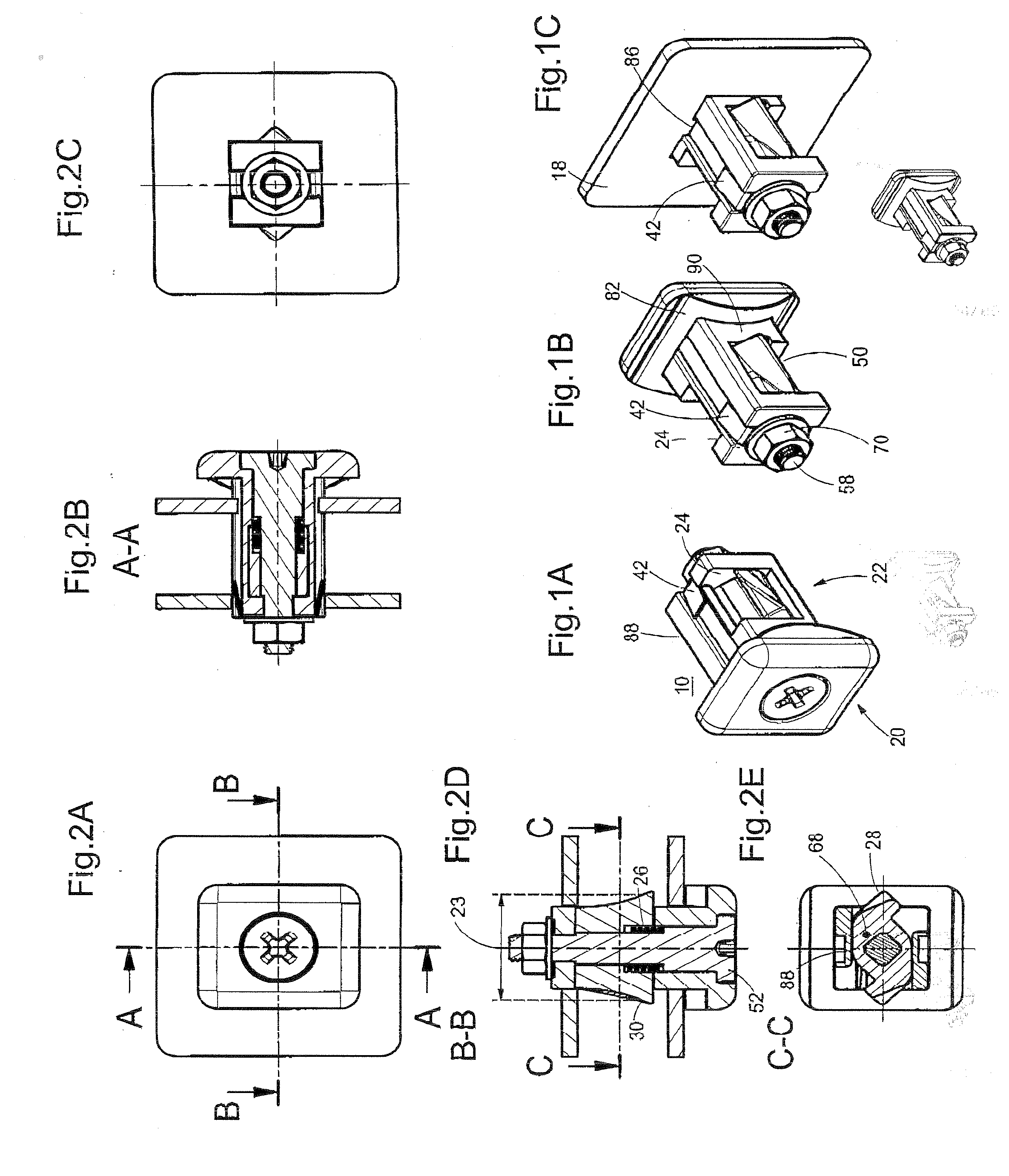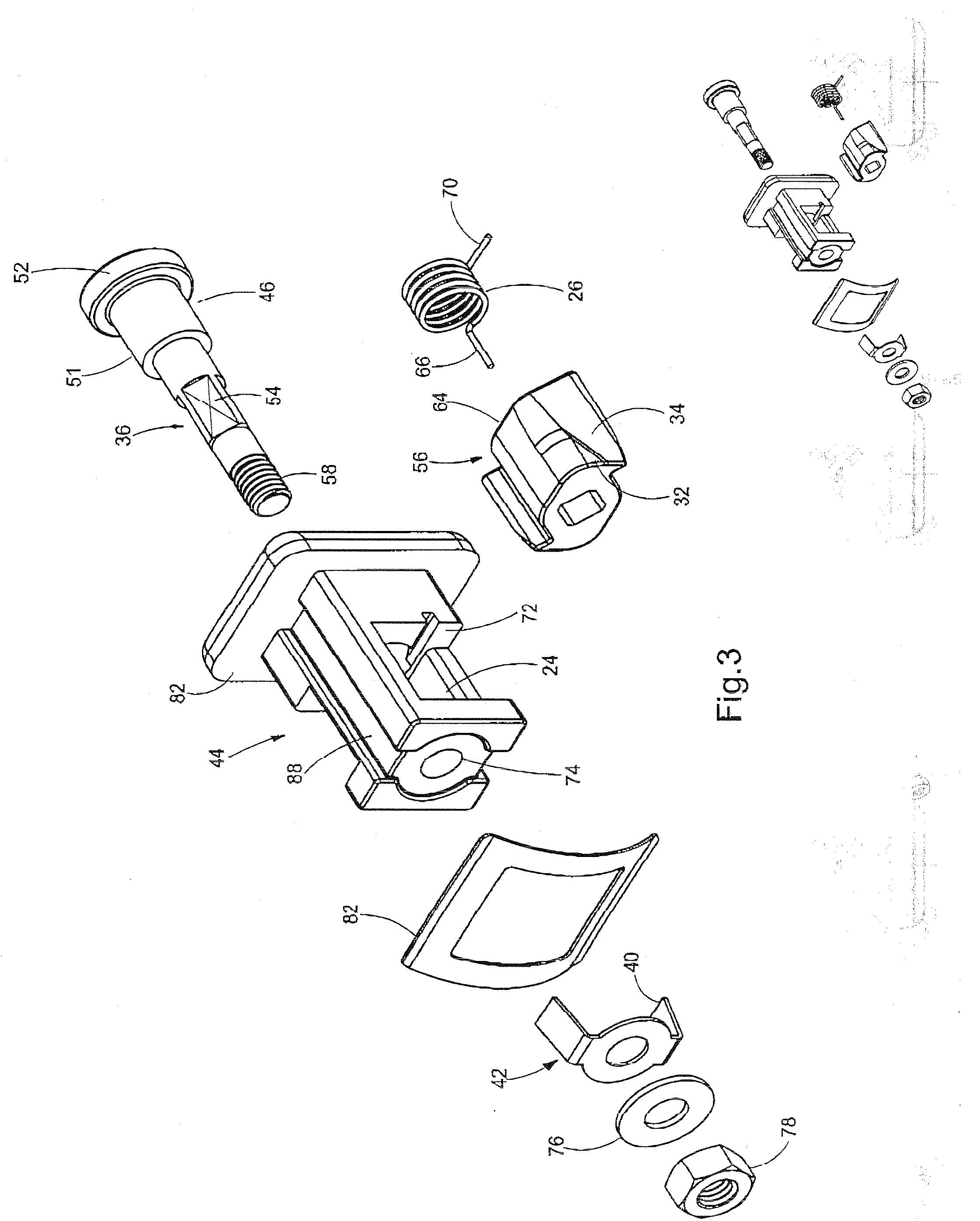Snap faster
a fastener and snap technology, applied in the field of snap fasteners, can solve the problems of unintended loosening of the snap fastener in the slide-shaped prior art, difficult simultaneous positioning of the snap fastener, and simplification over the prior art, and achieve the effect of reducing pressure and accurately fastening to on
- Summary
- Abstract
- Description
- Claims
- Application Information
AI Technical Summary
Benefits of technology
Problems solved by technology
Method used
Image
Examples
Embodiment Construction
[0030]It is to be understood that the figures and descriptions of the present invention have been simplified to illustrate elements that are relevant for a clear understanding of the present invention, while eliminating, for purposes of clarity, many other elements which are conventional in this art. Those of ordinary skill in the art will recognize that other elements are desirable for implementing the present invention. However, because such elements are well known in the art, and because they do not facilitate a better understanding of the present invention, a discussion of such elements is not provided herein.
[0031]The present invention will now be described in detail on the basis of exemplary embodiments.
[0032]FIG. 1A shows a snap fastener 10 suitable for fastening a first thin wall 18 such as a housing wall, door leaf, shutter, or the like, which is provided with a through-opening 16 to a second thin wall 14 such as a thin-walled wall support such as a housing frame, door fram...
PUM
 Login to View More
Login to View More Abstract
Description
Claims
Application Information
 Login to View More
Login to View More - R&D
- Intellectual Property
- Life Sciences
- Materials
- Tech Scout
- Unparalleled Data Quality
- Higher Quality Content
- 60% Fewer Hallucinations
Browse by: Latest US Patents, China's latest patents, Technical Efficacy Thesaurus, Application Domain, Technology Topic, Popular Technical Reports.
© 2025 PatSnap. All rights reserved.Legal|Privacy policy|Modern Slavery Act Transparency Statement|Sitemap|About US| Contact US: help@patsnap.com



